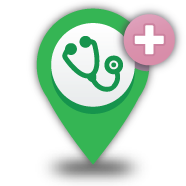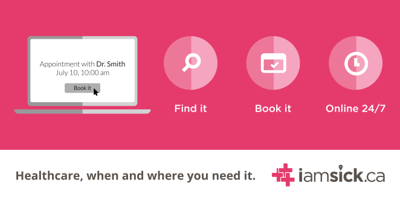No-shows, or missed appointments, are a costly and unfortunate reality for many healthcare...
Language Barriers, Newcomers & Healthcare – iamsick.ca blog
The Problem
Sarah Bowen, a professor at the University of Alberta and expert on healthcare for underserved populations believes that language is the primary factor preventing people from staying healthy. A longitudinal survey conducted by Statistics Canada tracked 12,000 newcomers between 2000-2001 asking about their state of health. After four years, the percentage of people with poor health jumped from seven percent to 17 percent. Also, from an insider perspective, Dr. Joel Ray, a Toronto obstetrician, also stated that the struggle to communicate with their patients is a constant struggle for medical practitioners across Canada. With immigration on the rise, the hidden costs of language barriers also goes up. (See below for the breakdown of recent immigrants to Canada by birthplace).
The Cost
One of the obvious costs of not being able to understand one’s doctor or nurse is the emotional strains placed on the patient and his or her family members. Young children, relatives and even coworkers are often asked to be translators, and this places incredible stress on the interpreters. Aside from emotional impact, there are also confidentiality and liability issues that affect both the practitioners and the patients. Not to mention, language barriers bear invisible costs for the government and taxpayers. According to Bowen, medical practitioners of patients affected by language barriers tend to over-test or keep patients in hospitals longer than patients who do not experience language barriers.
To counteract language barriers, a common solution is to hire interpreters or to use a phone-based interpreter service. This is only a short term solution to a perpetual problem. First of all, interpreter services are costly, so it may be difficult to hire interpreters for all healthcare visits. Aside from costs, regional differences and cultural sensitivity add layers to language translation. For example, at the 2014 University of Toronto IHI QuIPS conference, a physician described an incident where a South Korean interpreter was brought in to translate for a North Korean patient, which made things even more complicated.
The Solution
Without the cost for hiring interpreters, iamsick.ca tries to leverage awareness to help eliminate the language barrier between patients and healthcare providers. On our website, we have a language filter that allows users to easily search for healthcare providers that speak a specific language, whether it be Chinese, Russian, Arabic, Hindi and many more. Our website and smartphone app is also free, so we encourage you to check it out. With our indiegogo campaign, we also aim to translate our website and app into more languages to ensure that underserved population will have appropriate access to healthcare.
Are your friends and family covered? Together, we can help everyone in Canada access healthcare when, where & in whatever language they prefer. Visit http://canada.iamsick.ca to see how you can help!
The Future
According to this chart, the most spoken languages in Canada (aside from English and French) are Chinese and German. Should we translate our website and app to Chinese and German next? If not, what language should be prioritized? Let us know in the comments below..
.png?width=1945&height=350&name=empower_logo-h_digital%20(1).png)







